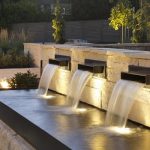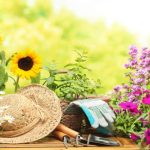What is Residential Landscaping?
It is the art of decisively changing the natural features close to your residence for the purpose of making them more beautiful and useful. Moreover, residential landscaping is the best way to alter the region adjoining your house into your own individual ecstasy, so you have a soothing place to come home to after a tiring day.
In order to have the beautiful and blossoming landscape, one can either hire a professional landscaping designer if one is unaware of the ways to alter the surroundings as an expert will have the proper knowledge and skill to carry out the activity in a much skilled manner.
While performing the process of residential landscaping, it is important for a gardener to differentiate between the plants that you should grow and avoid. Planting hazardous plants might not only have a bad impact on its other fellow plants but might spoil the land as well. So it is necessary to find and conclude, which plants can prove to be dangerous to grow.
The following few plant, trees, and shrubs should be avoided for a hazardous free residential landscaping. They are explained in brief.
Annuals:
- Elephant ear: The botanical name of elephant ear is Colocsia esculenta. The entire plant is poisonous and dangerous.
- Easter lily: The botanical name of Easter lily is Zephyranthus spp. Easter lily also is completely toxic and unsafe.
- Morning glory: Ipomoea spp. is the botanical name of Morning Glory. The seeds and roots of Morning glory are toxic.
- Impatient: Impatiens spp. is the botanical name of Impatient. Its stem, leaves and roots are harmful.
Perennials and Vines
- Crocus: Crocus is botanically recognized as Crocus spp. The bulb is the contaminated part of the plant.
- Daffodil: Narcissus spp. is the botanically registered name of Daffodil. The hazardous part of the plant is bulb
- Iris: Iris spp. is the botanical name of Iris. Underground Rhizomes is the lethal part of the plant.
- English ivy: English Ivy is botanically called as Hedera helix. Its stem leaves and fruits as well are venomous and risky.
Trees and Shrubs:
- Black locust: Black Locust is botanically referred as Robinia pseudoacacia. The seed, as well as the bark of the tree, is contaminated, and so it is harmful.
- Elderberry: Sambucus Canadensis is the botanical term of Elderberry. The root, bark, stem and leaves are infected with poison. It can be said that the entire shrub is harmful.
- Oak: Quercus is the botanical name of Oak tree. The lethal parts of the tree are acorns and foliage.
The above vines, trees, shrubs, and other plants are a few names which should be avoided to have a proper and toxic free residential landscaping in your house. Like them, more plants are there which can be fatal and so you should make a note of the plants in accordance to the proximity of their danger for your residential landscaping.
Conclusion
Precaution is always better than cure. Plant trees accordingly instead of crying over the after results of planted hazardous plants. Your suggestions will be appreciated, and your doubts will be answered.






